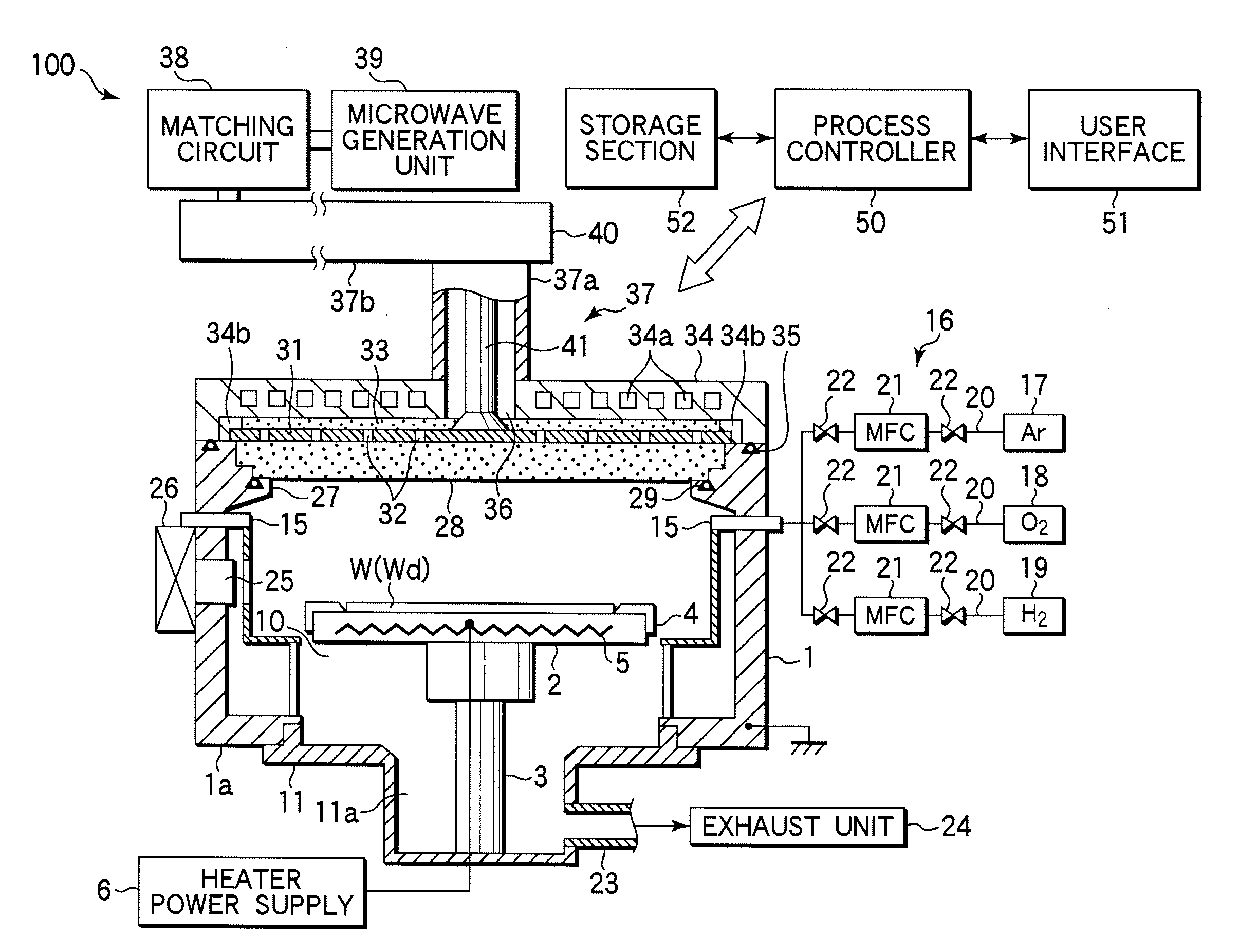Semiconductor Device Manufacturing Method and Plasma Oxidation Treatment Method
a technology of plasma oxidation treatment and semiconductor devices, which is applied in the direction of coatings, chemical vapor deposition coatings, electric discharge tubes, etc., can solve the problems of increased sheet resistance, increased leakage current, and product malfunction, so as to stabilize the quality of a semiconductor product, prevent the effect of affecting the product, and significantly reduce the contamination at atomic level
- Summary
- Abstract
- Description
- Claims
- Application Information
AI Technical Summary
Benefits of technology
Problems solved by technology
Method used
Image
Examples
Embodiment Construction
[0066]Preferable embodiments of the present invention will now be described with reference to the accompanying drawings.
[0067]FIG. 1 is a sectional view schematically showing an example of a plasma processing apparatus suitable for performing a plasma oxidation method according to the present invention. This plasma processing apparatus utilizes an RLSA (Radial Line Slot Antenna) plasma generation technique, in which microwaves are supplied from a planar antenna having a plurality of slots into a process chamber to generate plasma, so that microwave plasma is generated with a high density and a low electron temperature.
[0068]This plasma processing apparatus 100 can proceed with a plasma process at a low temperature of 600° C. or less and free from damage to the underlying film and so forth. Further, this apparatus can provide high density plasma with good plasma uniformity to realize process uniformity comparable to those attained by diffusion furnaces. Accordingly, the plasma oxidat...
PUM
| Property | Measurement | Unit |
|---|---|---|
| temperature | aaaaa | aaaaa |
| process temperature | aaaaa | aaaaa |
| temperature | aaaaa | aaaaa |
Abstract
Description
Claims
Application Information
 Login to View More
Login to View More - R&D
- Intellectual Property
- Life Sciences
- Materials
- Tech Scout
- Unparalleled Data Quality
- Higher Quality Content
- 60% Fewer Hallucinations
Browse by: Latest US Patents, China's latest patents, Technical Efficacy Thesaurus, Application Domain, Technology Topic, Popular Technical Reports.
© 2025 PatSnap. All rights reserved.Legal|Privacy policy|Modern Slavery Act Transparency Statement|Sitemap|About US| Contact US: help@patsnap.com



